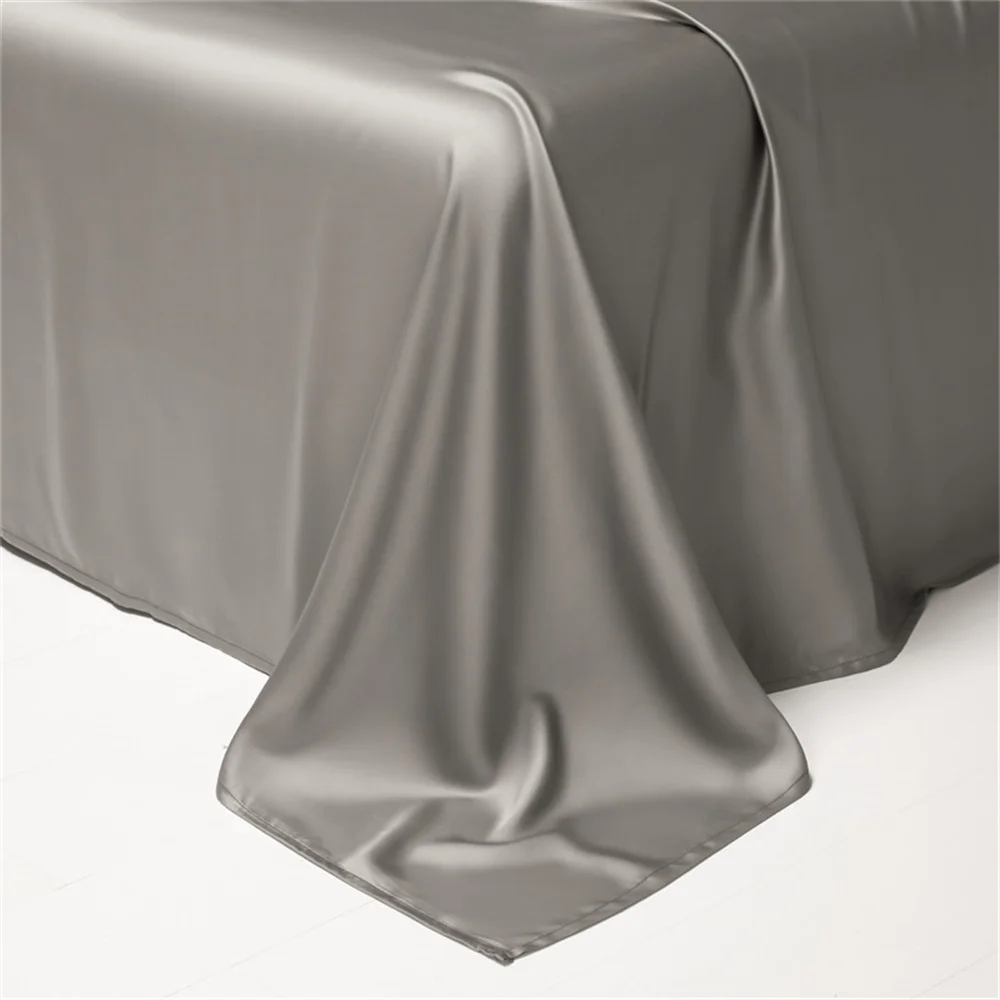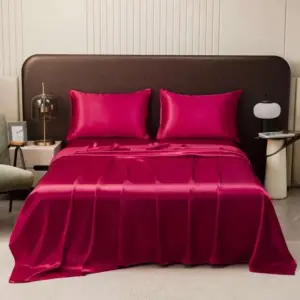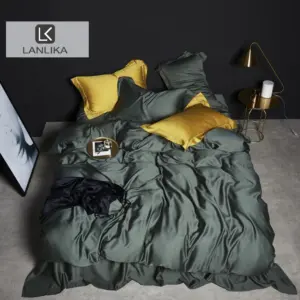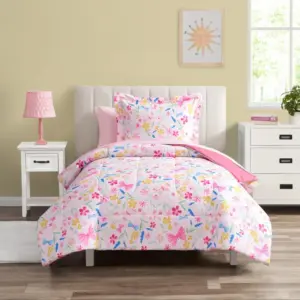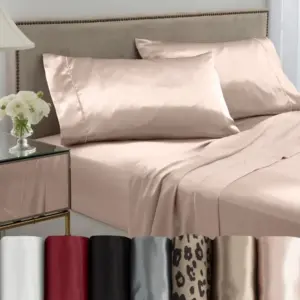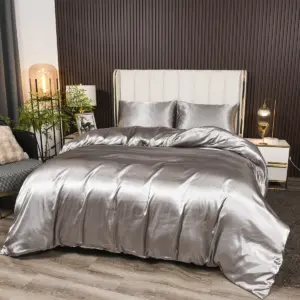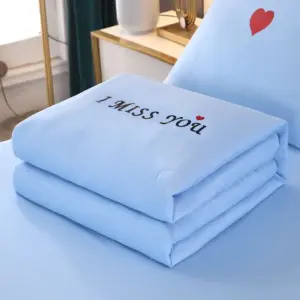Introduction to Silk Bedding: Luxury or Necessity?
Silk bedding represents the pinnacle of luxury in the sleep world, becoming increasingly popular among those seeking to transform their bedrooms into personal sanctuaries. Unlike conventional bedding materials, silk is made from natural protein fibers produced by silkworms, creating a uniquely smooth and lustrous fabric that has been treasured for thousands of years.
As more people recognize the importance of sleep quality for overall health, many are questioning whether silk bedding fundamentals are worth exploring beyond their reputation for luxury. This comprehensive guide aims to analyze the genuine benefits and potential drawbacks of silk bedding, helping you determine if this premium investment aligns with your sleep needs and lifestyle.
Mulberry silk stands as the gold standard in the industry, renowned for its exceptional quality and consistency. Throughout history, silk has adorned the beds of royalty and the wealthy, but today’s market offers various options from silk sheets and pillowcases to complete duvet covers and bedding sets.
Before diving into specific products, understanding the silk bedding basics will help you navigate the sometimes confusing terminology and quality indicators. By the end of this guide, you’ll understand exactly what makes certain mulberry silk bedding sets worth their premium price—and whether they’re right for you.
The Exceptional Benefits of Silk Bedding
Silk bedding offers a remarkable combination of comfort, health benefits, temperature regulation, and hypoallergenic properties that set it apart from conventional bedding materials. Understanding what’s included in silk bedding sets can help you appreciate the full scope of benefits you might experience.
Unmatched Comfort and Luxurious Feel
The moment you touch silk bedding, you’ll notice its extraordinary smoothness—a sensation unlike any other fabric. This unique texture comes from silk’s protein structure, creating an incredibly soft surface that glides against your skin. Unlike even the highest quality cotton, silk has a natural sheen and lightweight drape that enhances its luxurious feel.
Many users report an immediate difference when switching from traditional cotton to silk bedding, describing the experience as “sleeping on a cloud.” The fabric doesn’t bunch or crease under your body, maintaining consistent comfort throughout the night.
Remarkable Skin and Hair Health Benefits
Silk’s smooth surface creates significantly less friction against your skin and hair compared to cotton or synthetic materials. This reduced friction means fewer sleep creases on your face and less hair breakage and tangling overnight.
The natural proteins in silk—sericin and fibroin—share similarities with human skin proteins, which may explain why silk feels so compatible with our skin. Unlike cotton, which can absorb moisture from your skin, silk maintains your skin’s natural hydration balance while still wicking away excess moisture.
These properties make silk particularly beneficial for those with sensitive skin, fine hair, or anyone concerned about premature aging. The protein structure of silk contains 18 amino acids that work in harmony with your skin’s natural chemistry.
Natural Temperature Regulation Properties
One of silk’s most remarkable qualities is its ability to adapt to your body temperature, making it comfortable year-round. The thermal properties of silk bedding work with your body’s natural temperature regulation.
During summer months, silk’s breathable structure allows heat and moisture to escape, preventing the clammy feeling often associated with synthetic materials. In winter, silk’s natural protein fibers provide insulation by trapping a thin layer of warm air close to your body.
This temperature-regulating quality helps maintain your ideal sleeping temperature, potentially reducing nighttime waking and improving overall sleep quality. For couples with different temperature preferences, silk offers a comfortable middle ground.
Hypoallergenic and Health Advantages
Silk naturally resists dust mites, mold, and mildew—common allergens that can thrive in other bedding materials. The protein structure of silk makes it inhospitable to these microscopic irritants.
For allergy and asthma sufferers, silk bedding can provide significant relief by reducing exposure to common triggers. The material doesn’t require the chemical treatments often used in other bedding production, making it suitable for those with chemical sensitivities.
Additionally, silk can absorb up to 30% of its weight in moisture without feeling damp, helping to keep skin hydrated while preventing bacterial growth that thrives in moist environments.
Understanding the Drawbacks of Silk Bedding
While silk bedding offers numerous benefits, it’s important to consider certain drawbacks before making your investment. A balanced understanding helps ensure your expectations align with reality.
Premium Price Point Considerations
There’s no avoiding the fact that silk bedding represents a significant investment compared to conventional options. A quality silk sheet set typically costs several times more than a comparable cotton set. This price difference stems from the labor-intensive silk production process and the quality of the raw material.
For example, it takes thousands of silkworm cocoons to produce enough silk for a single duvet cover, and the processing requires skilled craftsmanship. When exploring luxury silk bedding sets, you’ll notice this premium positioning is consistent across brands.
However, many users find that viewing silk bedding as a long-term investment rather than an expense helps justify the cost. When properly cared for, quality silk bedding can outlast multiple sets of cotton alternatives, potentially offering better value over time.
Specific Care Requirements
Silk requires more attentive care than standard bedding materials. While many silk items can be machine washed, this must be done on a delicate cycle with cold water and in a mesh laundry bag to prevent damage.
Harsh detergents can break down silk fibers, so pH-neutral or specially formulated silk detergents are necessary. Bleach and fabric softeners should never be used as they can irreparably damage the fabric.

Drying methods also require attention—silk should be air-dried away from direct sunlight to prevent yellowing and fiber damage. The extra care requirements mean silk bedding typically doesn’t fit into a standard “wash and tumble dry” routine.
The Slippery Texture Factor
Silk’s smooth surface, while delightful against the skin, can cause practical challenges. Sheets may slide around on the mattress, and duvet inserts can bunch within their covers due to the low friction between silk surfaces.
This issue can be addressed with features like strong elastic corners on fitted sheets and ties within duvet covers, but it remains a consideration for some users. The slippery quality that benefits skin and hair can occasionally create minor inconveniences during bed-making or sleeping.
Durability Concerns When Improperly Handled
While properly maintained silk is surprisingly durable, it can be vulnerable to damage when mishandled. Sharp objects, velcro, rough surfaces, and even long fingernails can catch on silk fibers, creating snags or tears.
The durability of silk bedding largely depends on its momme weight (the measurement of silk density). Products in the 19-25 momme range offer a good balance between luxury feel and durability for bedding, but lighter weights may not withstand regular use as well.
With proper care, premium silk bedding can last for many years, but it will never have the carefree durability of more robust materials like cotton or polyester blends.
Making an Informed Decision: Is Silk Worth the Investment?
When considering silk bedding, it’s helpful to reframe the purchase as a wellness investment rather than simply buying sheets. Quality sleep directly impacts physical health, mental wellbeing, and daily performance, making your sleeping environment worthy of careful consideration.
From a cost perspective, breaking down the price over time presents a different picture. A $300 silk pillowcase used nightly for three years costs about 27 cents per use—potentially less than a weekly coffee when viewed as a long-term investment. Many users find that silk bedsheets are worth this investment for their unique benefits.
Certain individuals may benefit more significantly from silk bedding, including:
- People with sensitive skin conditions like eczema or dermatitis
- Those experiencing night sweats or temperature regulation issues
- Allergy sufferers seeking hypoallergenic bedding options
- Individuals concerned about premature aging and hair breakage
The environmental aspect also deserves consideration. As a natural, biodegradable fiber, silk offers sustainability advantages over synthetic alternatives, though the production process does involve silkworms.
However, silk might not be the right choice for everyone. Those on tight budgets, people who prefer low-maintenance bedding, or those morally opposed to animal-derived products may want to explore alternatives. For those curious about specific options, our collection of silk sheets showcases the range of possibilities.
Essential Quality Markers: What Makes Premium Silk Bedding
Understanding the quality indicators of silk bedding helps ensure you’re making a worthwhile investment rather than purchasing an inferior product with a premium price tag.
Types of Silk: Choosing the Right Material
Mulberry silk represents the highest quality option for bedding. Produced by silkworms fed exclusively on mulberry leaves, this silk type offers consistent fiber quality, strength, and a smoother surface than alternatives.
Other varieties include:
– Tussah (wild silk): Slightly coarser with a more textured feel
– Habotai silk: Thinner and less durable, better suited for clothing than bedding
– Charmeuse silk: Often blended with other materials
For bedding purposes, 100% silk sheets made from pure Mulberry silk provide the optimal combination of durability and comfort. The consistent fiber quality of Mulberry silk translates to a smoother surface against your skin and more reliable performance over time.
Decoding Momme Weight: The Density Factor
Momme weight measures silk density—specifically the weight in pounds of 100 yards of silk, 45 inches wide. This measurement directly affects the durability, feel, and price of silk bedding.
For bedding, the ideal range typically falls between 19-25 momme:
– 16-19 momme: Lightweight, suitable for summer use but less durable
– 19-22 momme: Good balance of softness and durability for everyday use
– 22-25 momme: Premium weight offering maximum durability and a luxurious drape
– Above 25 momme: Extremely dense and durable but may feel heavier
Different bedding items benefit from different weights—pillowcases often work well at 19 momme, while sheets and duvet covers might warrant 22+ momme for longevity.
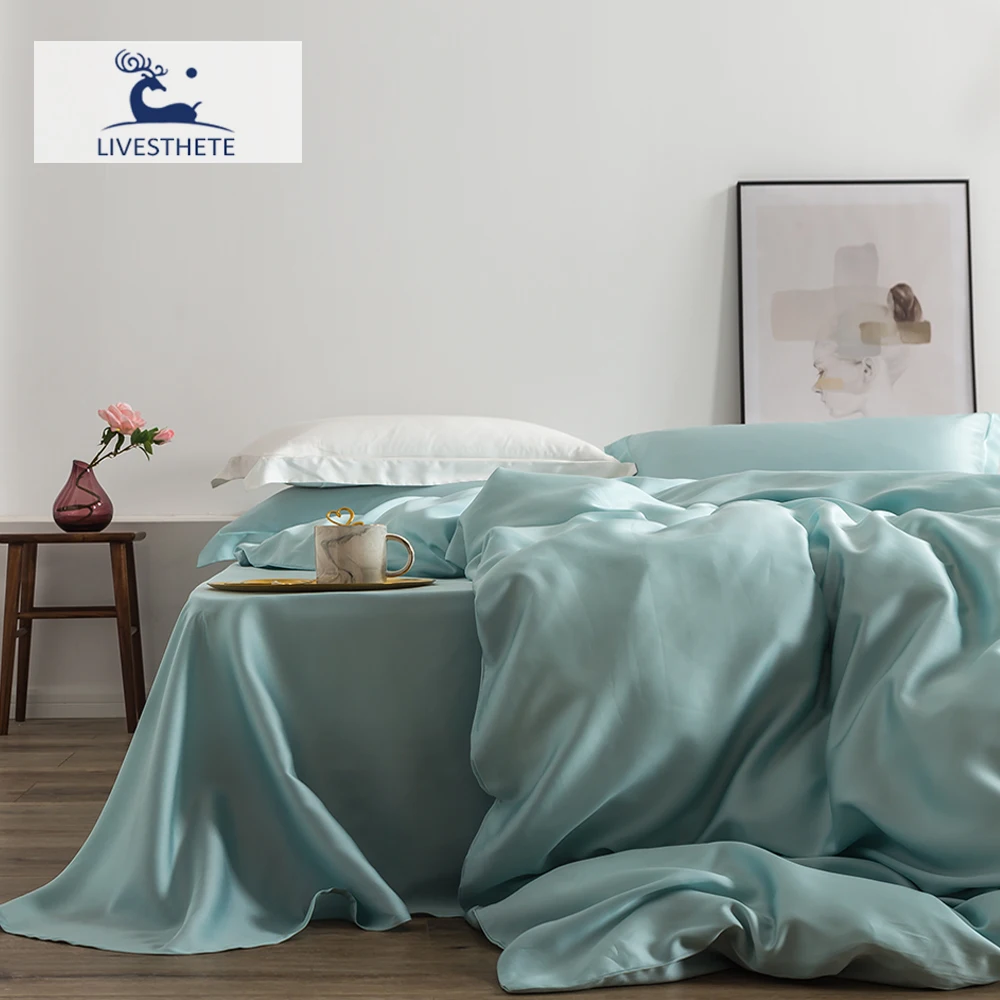
Silk Quality Grading System Explained
Beyond momme weight, silk quality is graded on an A-scale, with 6A representing the highest available quality. This grading considers:
– Uniformity of threads
– Consistency in coloring
– Purity of the silk
– Overall cleanliness of the finished product
Quality grades directly impact price, with 6A commanding premium pricing. When shopping, be wary of unverified claims about grading—reputable manufacturers provide certification of their quality standards.
Weave Variations and Their Impact
The weave pattern significantly affects how silk bedding looks, feels, and performs:
- Charmeuse: The most common weave for silk bedding, featuring a smooth face and slightly textured back
- Habotai: A lighter plain weave that’s less durable but very breathable
- Silk satin: Creates a very glossy appearance but may be more slippery
Weave choice affects not just aesthetics but also practical considerations like how sheets stay in place and how the fabric interacts with your skin.
Important Certifications for Safety and Ethics
Quality silk bedding often carries certifications that verify its safety and production standards:
- OEKO-TEX Standard 100: Ensures the product is free from harmful substances
- BSCI (Business Social Compliance Initiative): Addresses ethical manufacturing practices
- Peace Silk or Ahimsa Silk certification: Indicates non-violent silk production methods
These certifications provide assurance beyond marketing claims and demonstrate a manufacturer’s commitment to quality and ethics.
Comparative Analysis: Silk vs. Other Premium Bedding Materials
Understanding how silk compares to other premium bedding materials helps contextualize its value proposition and determine if it meets your specific needs.
Silk vs. Cotton: Traditional Rivals
While high-quality cotton (especially Egyptian and Pima varieties) offers excellent breathability and easy care, silk provides superior smoothness and natural temperature regulation. Cotton absorbs more moisture than silk, potentially drawing hydration from skin overnight.
Cotton bedding typically requires less maintenance and comes at a lower price point, but it doesn’t offer the same skin and hair benefits. The lifespan comparison favors silk when properly cared for—quality silk bedding can outlast cotton by years, partially offsetting the initial cost difference.
For comprehensive information, our guide to buying luxury silk bedding explores these differences in greater detail.
Silk vs. Satin: Natural vs. Synthetic
The confusion between silk and satin is common—satin refers to a weave pattern rather than a specific material. Most commercial “satin” bedding is made from polyester, a petroleum-based synthetic.
While polyester satin mimics some of silk’s smooth texture at a fraction of the cost, it lacks silk’s breathability, temperature regulation, and hypoallergenic properties. Synthetic satin may create static and doesn’t biodegrade like natural silk.
For those seeking similar benefits to silk without animal products, exploring whether vegan silk alternatives are comparable can provide valuable insights.
Silk vs. Other Natural Luxury Fibers
Linen offers exceptional cooling properties and improves with age but has a distinctly textured feel compared to silk’s smoothness. It wrinkles easily and typically feels crisp rather than soft.
Bamboo lyocell provides excellent moisture-wicking and antibacterial properties similar to silk, often at a lower price point. However, it typically doesn’t offer the same skin friction benefits or protein structure compatible with human skin.
What sets silk apart is its unique combination of natural protein fibers, exceptional smoothness, and temperature-regulating properties—a combination not fully replicated by any single alternative.
Essential Care Guide: Maintaining Your Silk Bedding Investment
Proper maintenance significantly extends the lifespan of silk bedding, ensuring you get maximum value from your investment.
Proper Washing Techniques
For hand washing:
– Use cold water (under 30°C/86°F)
– Add a small amount of pH-neutral or silk-specific detergent
– Gently agitate rather than rubbing or wringing
– Rinse thoroughly to remove all soap residue
For machine washing:
– Use a mesh laundry bag to prevent catching or tangling
– Select the delicate/silk cycle with cold water
– Use minimal detergent specifically formulated for silk
– Avoid fabric softeners, bleach, and optical brighteners
Many first-time silk users start with silk pillowcases to get accustomed to the proper care routine before investing in complete bedding sets.
Optimal Drying Methods
To properly dry silk bedding:
– Gently press water out between towels—never wring or twist
– Lay flat to dry on a clean towel away from direct sunlight
– Ensure complete drying before storing to prevent mildew
– Avoid hanging silk sheets, as wet silk can stretch
While some silk items claim to be tumble-dry safe on the lowest setting, air drying significantly extends the lifespan of your investment.
Storage and Regular Maintenance
Between uses:
– Store silk in a cool, dry place away from direct sunlight
– Use breathable cotton storage bags rather than plastic
– Avoid cedar chests or mothballs which can damage fibers
– Iron only if necessary, using the lowest silk setting when the item is still slightly damp
For longer lifespan:
– Rotate items regularly if you have multiple sets
– Address any small snags immediately to prevent runs
– Consider laundering silk bedding every 10-14 days with normal use
Full-size Silk Sheets, King Size Silk Sheets, Queen Size Silk Sheets, Twin Size Silk Sheets, Washable Silk Sheets
Price range: $95.95 through $178.37 Select options This product has multiple variants. The options may be chosen on the product page100% Silk Sheets, Green Silk Sheets, King Size Silk Bedding Set, Mulberry Silk Bedding Sets, Queen Size Silk Bedding Set
Price range: $1,246.21 through $1,615.22 Select options This product has multiple variants. The options may be chosen on the product pagePink Silk Sheets, Twin Size Silk Sheets
$171.80 Select options This product has multiple variants. The options may be chosen on the product pageFull-size Silk Sheets, Pink Silk Sheets
$136.31 Select options This product has multiple variants. The options may be chosen on the product pageGrey Silk Sheets, Silk Sheet and Pillowcase Set
Price range: $88.20 through $146.64 Select options This product has multiple variants. The options may be chosen on the product pageBamboo Silk Sheets, Cooling Silk Sheets
Price range: $130.76 through $177.80 Select options This product has multiple variants. The options may be chosen on the product page
Answering Your Questions: Silk Bedding FAQs
How long does quality silk bedding typically last with proper care?
With appropriate maintenance, premium silk bedding can last 10+ years, significantly longer than conventional cotton options. The higher the momme weight, the greater the potential longevity.
Is silk bedding appropriate for year-round use in different climates?
Yes, silk’s natural temperature regulation makes it suitable for both warm and cool climates. Its ability to wick moisture while providing insulation creates comfort in varying conditions.
Can all silk bedding be machine washed, or are some items hand-wash only?
Most modern silk bedding can be machine washed on gentle cycles, but always check the manufacturer’s care instructions. Higher momme weights (22+) typically handle machine washing better than lighter weights.
Do the skin and hair benefits of silk make a noticeable difference?
Many users report visible improvements in skin hydration and reduced hair breakage within weeks of switching to silk. Those with sensitive skin or fine hair typically notice the most significant benefits.
How can I verify if silk bedding is genuine and high quality?
Look for specific momme weight listings, recognized certifications, and detailed fabric descriptions. A burn test can verify natural silk (it smells like burning hair and turns to ash), though this isn’t practical for pre-purchase assessment.
Will silk bedding slide off the bed during sleep?
Quality silk bedding typically includes features like strong elastic corners on fitted sheets and ties on duvet covers to minimize slipping. Some movement is normal due to silk’s smooth nature.
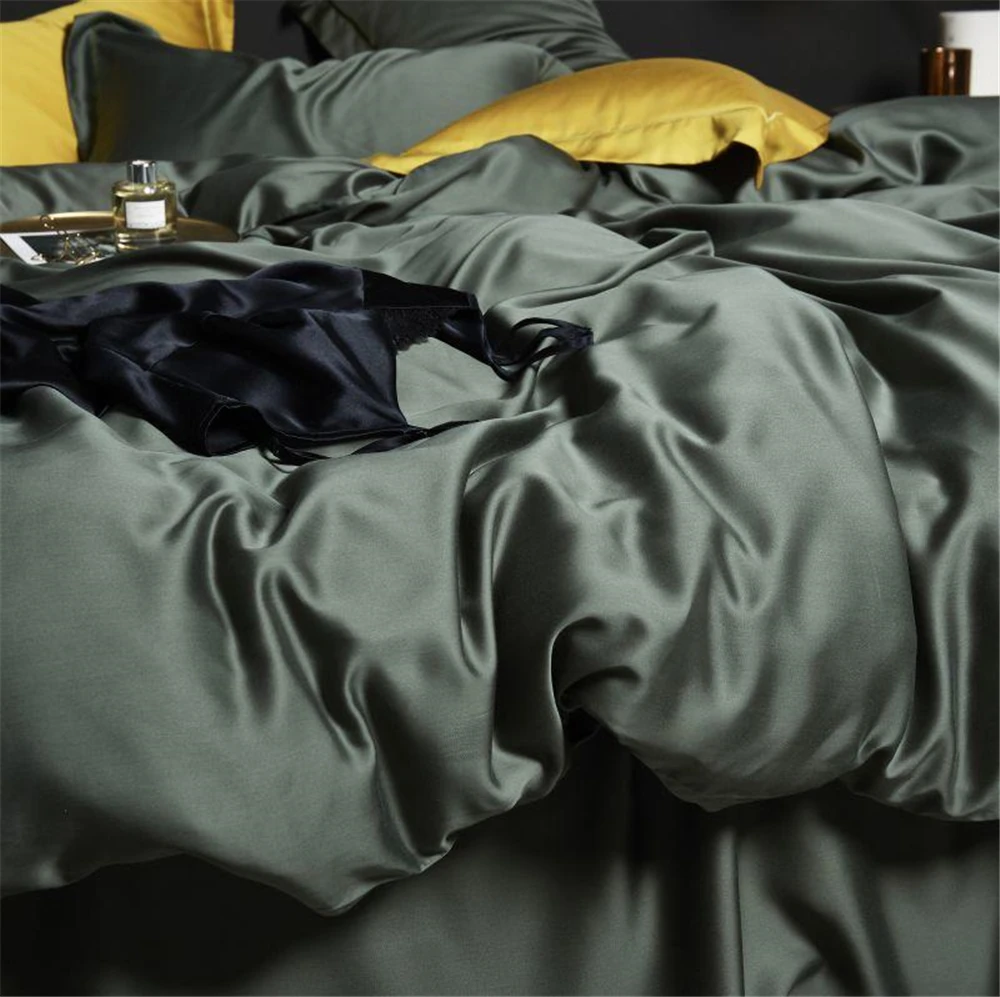
Your Guide to Ideal Silk Bedding Selection
After weighing the benefits and considerations, here’s how to approach your silk bedding decision:
- For first-time silk users: Start with a single pillowcase to experience the benefits and practice proper care before investing in complete sets
- For temperature-sensitive sleepers: Prioritize pure Mulberry silk with 19-22 momme weight for optimal breathability
- For those concerned about durability: Choose 22-25 momme options that balance longevity with comfort
- For maximum luxury: Look for 6A-grade Mulberry silk with charmeuse weave in the 22-25 momme range
When evaluating options, consider Sanctuary Soft’s carefully curated selection that meets rigorous quality standards. Remember that silk bedding represents an investment in your sleep quality and overall wellness—factors that extend well beyond simple luxury.
Beyond the Basics: Advanced Silk Bedding Considerations
For specific sleep needs, specialized silk options provide targeted benefits:
Hot sleepers may benefit from cooling silk sheets designed with maximized breathability, while cold sleepers might prefer slightly heavier momme weights for additional insulation. Allergy sufferers often report significant relief with silk, particularly when selecting products with additional antimicrobial treatments.
Beyond standard sheets and pillowcases, the silk bedding world offers specialized products like silk-filled duvets that regulate temperature more effectively than down or synthetic alternatives. Weighted silk blankets provide the benefits of pressure therapy without the heat retention common in conventional weighted blankets.
Seasonal considerations also matter—lighter momme weights (16-19) excel in warmer months, while heavier options (22+) provide more comfort during winter. Some manufacturers now offer silk blends that incorporate small percentages of other fibers to enhance durability or reduce slippage while maintaining most of silk’s beneficial properties.
Is Silk Bedding Right for Your Sleep Sanctuary?
The question of whether silk bedding is “worth it” ultimately comes down to your personal values, sleep needs, and budget priorities. For many users, the combination of comfort, health benefits, and longevity justifies the premium price point and additional care requirements.
Rather than viewing silk bedding as simply a luxury purchase, consider it part of your overall wellness routine—a daily investment in skin health, temperature regulation, and sleep quality. The benefits of consistently better sleep extend far beyond the bedroom, potentially improving everything from skin appearance to cognitive function.
That said, silk isn’t the only path to quality sleep. Some may find that high-quality cotton or modern bamboo alternatives meet their needs perfectly well at a lower price point with easier maintenance.
The most important factor is creating a sleep environment that works for your unique needs—whether that includes the ancient luxury of silk or other quality materials that help you rest and rejuvenate night after night.

